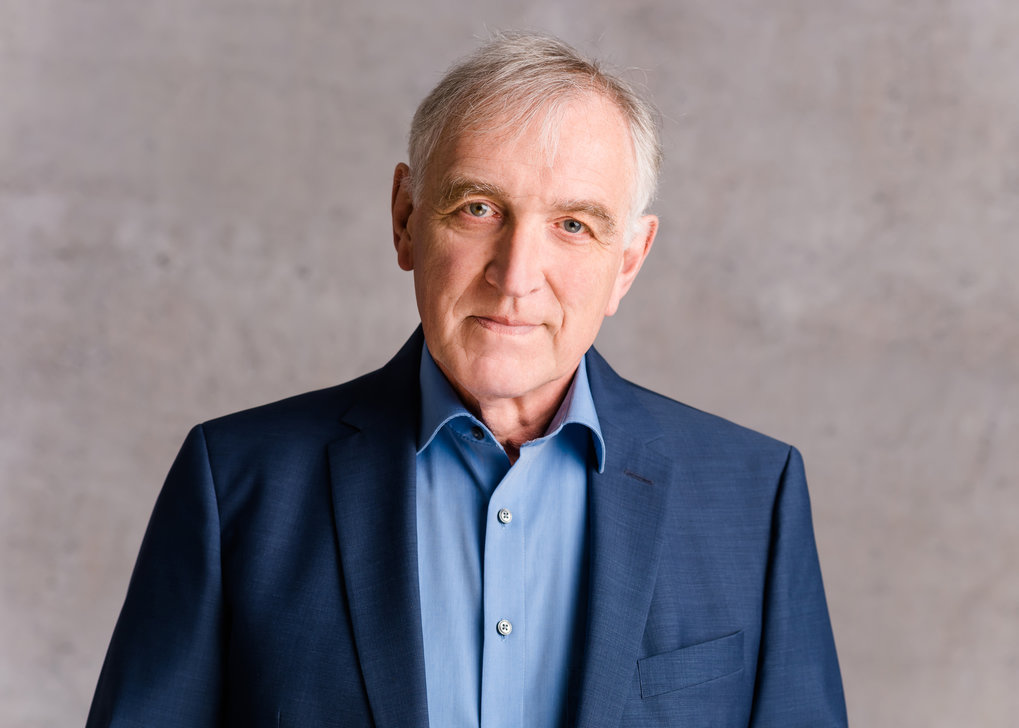Peter Predehl from the Max Planck Institute for Extraterrestrial Physics on the eRosita mission
The largest joint German-Russian project in the field of science to date was successfully launched on July 13: From Baikonur, a rocket launched the Spektrum-RG space observatory into space. The platform carries two X-ray telescopes, one of which is eRosita. It was developed under the leadership of the Max Planck Institute for Extraterrestrial Physics and is intended to survey the entire sky with a previously unattained spectral and spatial resolution. We spoke with Peter Predehl, the scientific Director of eRosita, about the mission.

Mr Predehl, what is special about eRosita?
Our telescope will first scan the entire sky in X-ray light and will not focus on individual sources. Such an “all-sky survey” offers a huge potential for discovery because one does not specifically search for a certain object but rather has something new and unexpected in view. Second, eRosita has an unlimited field of view and can therefore display large X-ray sources that extend far beyond the firmament. These include supernova remnants (i.e. the ejected gas shells of exploded stars).
What are the goals of the mission?
Simulations have shown that with eRosita, we will observe around 100,000 galaxy clusters. Investigating these largest structures in space is our primary goal. In such a cluster there are up to several thousand galaxies – Milky Way systems like ours – which are bound to each other by gravity. In X-ray light, these galaxy clusters appear as compact objects. However, we do not measure the light of the individual galaxies. Instead, the radiation that the gas emits between the galaxies, surrounds them like a cocoon. All in all, galaxy clusters form a large-scale structure that resembles a cosmic network. By observing the galaxy clusters, we are pushing cosmology ahead.
How is that to be understood?
The galaxy clusters reflect the distribution of matter in the universe. They form the threads and nodes of the cosmic web. In between, there are huge voids of virtually no matter. Space has evolved since the Big Bang. With eRosita, we can see great distances as well as look back in time. This is because the light from distant objects takes a long time to reach us. Imagine us observing a galaxy cluster in X-ray light. We already know the direction and its brightness. If we measure its distance with optical telescopes from follow-up observations, we can determine its mass. We thus know what specific density the universe had at a certain time. Using many such measurements, we can determine the change in density over the aeons. This allows us to derive various cosmological parameters.
Can you also find out anything about the expansion of space?
Yes, because space is expanding at an accelerated rate. The reason for this is apparently dark energy. We are thus dealing with a hot topic in current research. I’m not saying we’re going to solve the mystery of this dark energy. But we’re at least on the right track.
And is dark matter also an issue for eRosita?
As already mentioned, there are large amounts of hot gas between the galaxies of a cluster. This intergalactic plasma collected in a gravitational sink, which was probably generated by dark matter. It is interesting to follow how galaxy clusters have evolved under the influence of dark matter and over time.
Why will eRosita not run in an orbit around the earth but rather be stationed far away in space?
There are three main reasons for this: At a location around the Libration point 2, which is about 1.5 million km from Earth, our planet is not in the way. There is also a constant temperature out there because the instruments are not exposed to the constant change of day and night. Thirdly, the location allows a permanent observation of the sky.
What was it like to cooperate with the Russian colleagues?
At the working level, this was generally not a problem. Of course, there are always conflicts in collaborations. That’s quite normal. However, we had to learn a lot because the Russians have somewhat different procedures in a space project than western agencies such as ESA or NASA do.
Were you nervous before the launch?
No. I wouldn’t say nervous, I was tense, if anything. But we did everything that had to be done. And I was well aware: If the launch would go wrong, the telescope would be gone. There’s no plan B. By the way, we have been working on the project for ten years, which is a reasonable time for a mission of this magnitude.
When do you expect the first results?
Just two weeks after the launch, we open the lid of the telescope. The observatory is then cleaned of impurities. After three months, eRosita will have arrived at Libration point 2 and circle it in an orbit of up to 800,000 km half-axis. But I expect the first light on the way there – at the end of August.
The interview was conducted by Helmut Hornung







